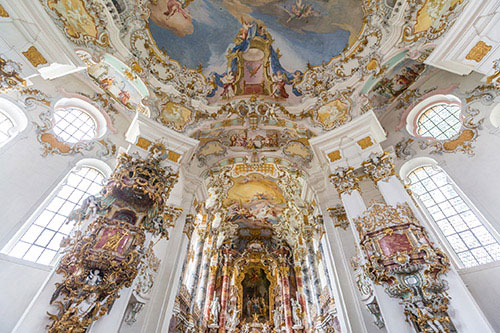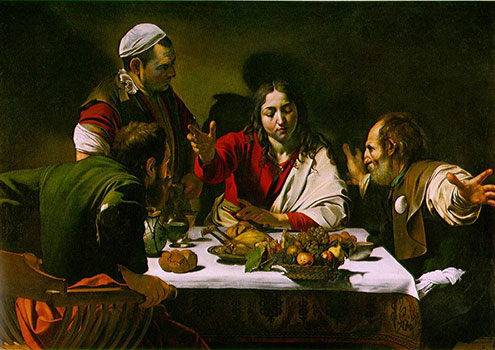Introduction

Hidden Objects and Rococo
Have you played the game where you try to find all of the hidden objects in a picture? The room may be full of paintings, pictures, objects, furniture, tapestries, and/or designs on the walls. It is done this way to make it hard for you to find what you are looking for and gets harder as you advance in levels.
Looking at one of those pictures on the game is a lot like looking at Rococo art and architecture. Rococo art, especially the interiors of Rococo churches, palaces, and other places, are full of things with curved lines, gold, objects, and artwork. It almost makes you feel like you are playing a "where is the hidden object" game when you are looking it!

Interior of Pilgrim Church (Wieskirche) in Steingaden, Germany

Compare and Contrast
See if you can figure out the differences in the Baroque painting on top and the Rococo painting below it!
Baroque:

Supper at Emmaus by Caravaggio, 1600-01
Rococo:

The See Saw by Fragonard, 1770-75
| Lesson Objectives |
|
Following successful completion of this lesson, students will be able to...
Enduring Understandings
The above objectives correspond with the Alabama Course of Study: Elements of Arts Literacy standards: 2, 3, 4, 6, 7, 8. |
